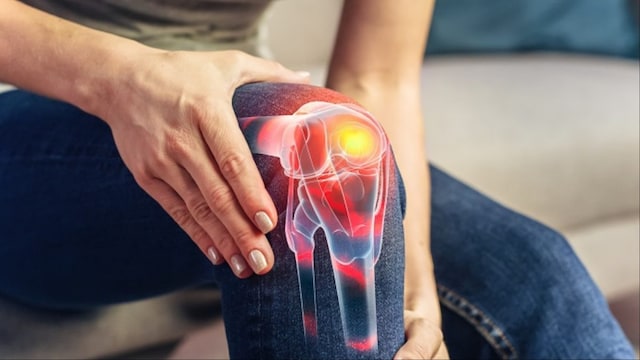Source :NEWS18 NEWS
Last Updated:May 17, 2025, 13:36 IST
Here’s why women are more at risk of osteoporosis and how calcium, vitamin D, and lifestyle changes can help maintain strong, healthy bones for life.
Good nutrition, exercise, and lifestyle changes can help maintain bone strength.
Maintaining strong bones is vital for women, not just to prevent fractures later in life, but to preserve independence, mobility, and overall well-being. Women are especially vulnerable to osteoporosis – a condition that weakens bones and raises the risk of fractures. According to the International Osteoporosis Foundation, an estimated 200 million women worldwide are affected. Often silent until a fracture occurs, osteoporosis can be prevented with key nutrients like calcium and vitamin D, which play a critical role in supporting long-term bone health.
Why Women Are More At Risk Of Osteoporosis
Recommended Stories
Jeevan Kasara, Director & CEO, Steris Healthcare, explains, “For several reasons, women are inherently more susceptible to osteoporosis. First, compared to men, they typically have thinner, smaller bones. Second, bone loss is accelerated after menopause due to a dramatic drop in estrogen, a hormone that protects bones. Even in the absence of symptoms, substantial bone loss may already have occurred by the time many women reach their 50s and 60s. This is where vitamin D and calcium are useful.”
The Role of Calcium
Calcium is the building block of bone health. About 99% of calcium in the body is contained within bones and teeth and serves for strength and structure. Kasara says, “If you are not obtaining calcium from foods, your body draws it out of your bones to sustain critical levels in your bloodstream. Through this, eventually the bones weaken. Women between 19 and 50 years old should have approximately 1,000 milligrams of calcium daily, whereas those above 50 years should have that increased to 1,200 milligrams.”
Milk, yoghurt, and cheese are good sources of dairy, but almonds, leafy greens (kale and broccoli), and soy milk can provide adequate calcium too.
Vitamin D: The Unsung Hero
Vitamin D is equally important but less conspicuous. It enables the body to absorb calcium effectively. Without sufficient vitamin D, a diet rich in calcium might not help safeguard bones. Vitamin D also maintains muscle strength and balance, which can prevent falls that could lead to fractures.
Kasara adds, “Sunlight is the natural source of vitamin D, but several women fail to receive enough because they have limited sun exposure, dark skin, or are older, meaning their ability to form vitamin D in their skin is diminished. Their diet can provide such foods as fatty fish (salmon, mackerel), fortified cereal, and egg yolks, but supplementation may be required. The daily recommended intake is 600 IU in women up to age 70 years and 800 IU in those who are older.”
Building Bone Health At Every Age
Bone health is not only an issue for postmenopausal women. It’s a lifelong process. Peak bone mass is typically achieved in the late 20s, and establishing strong bones during childhood and early adulthood is key. But even later in life, bone loss can be slowed down — or even reversed slightly — with good nutrition, weight-bearing exercise, and lifestyle modifications such as stopping smoking and reducing alcohol.
Empowering Women Through Knowledge
Knowing the value of calcium and vitamin D puts women in the driver’s seat when it comes to taking care of their bodies. Daily small choices such as selecting a breakfast that is rich in calcium, stepping outside for a walk, or taking supplements pay off in the long run.
- Location :
Delhi, India, India
- First Published:
May 17, 2025, 13:36 IST
SOURCE : NEWS 18








